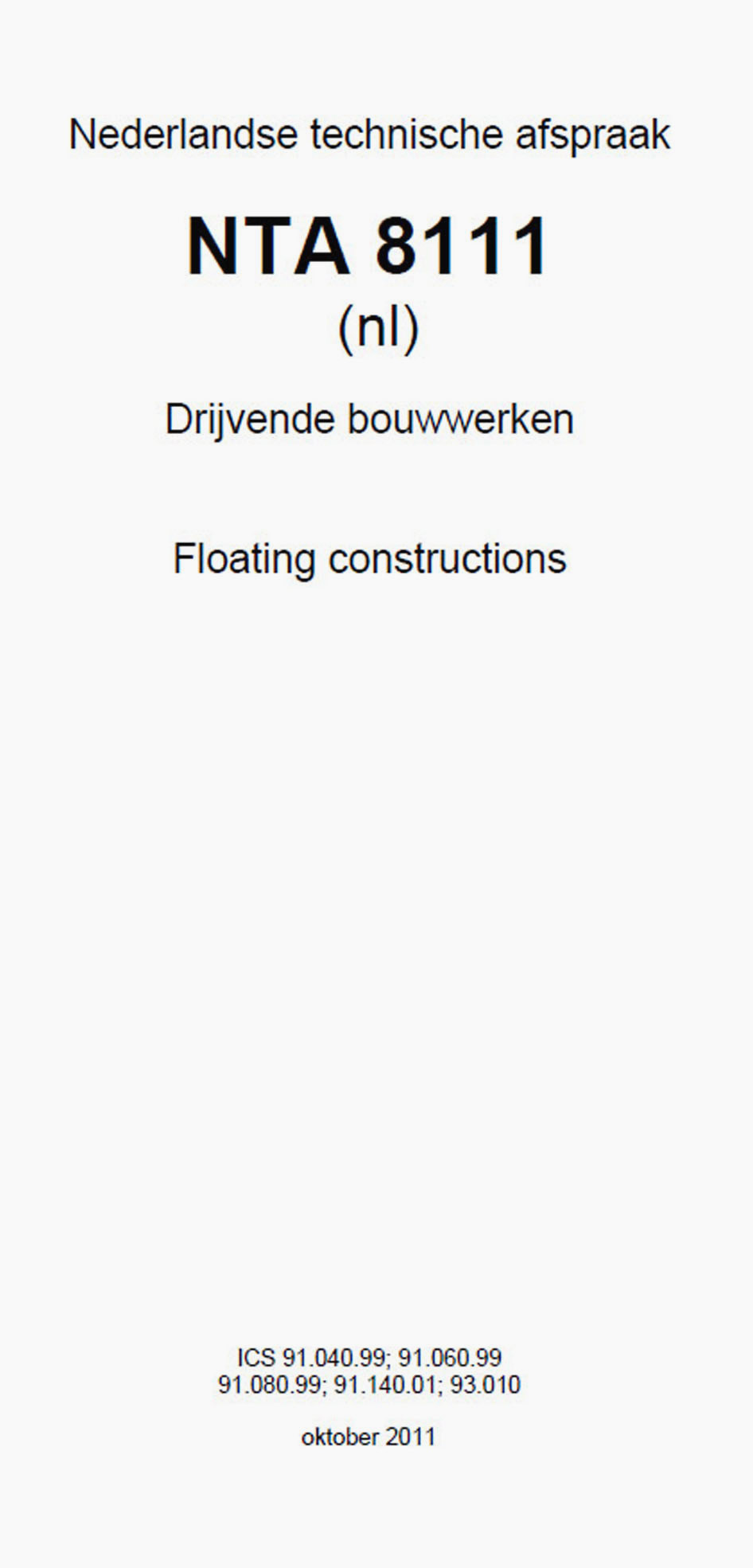
NTA 8111 Floating Construction
In the Netherlands, more and more floating structures (especially floating homes) are being implemented in urban plans and also actually built. Many (large) Dutch construction companies are experimenting with the construction of floating structures, and many Dutch design and consultancy firms specialize in this market. The market for floating building is professionalizing.
Floating building on the water may, as seen from the structural regulations, not cause additional problems in relation to building on the land. Building floating buildings in a wet environment involves specific problems. In practice, it is found that developers, consultancies, builders and municipalities sometimes struggle with the explanation of building regulations for floating structures. The (former) VROM Inspectorate therefore made the Floating Housing and Building Regulations in 2008, explaining how the Building Regulations (Building Code, Users Code, Municipal Building Regulation) should be applied to floating homes. Building regulations regulate the minimum required building and living quality, but does not control everything. A number of aspects of floating structures, such as stability, buoyancy, safety or acceptability, are not required by the Building Code. This concerns partly aspects of use. In addition, there are a number of topics that go against practice, or those that specifically address the development of floating structures. E.g. accessibility of floating structures, connection of utilities, water level fluctuations, water quality water management requirements, leakage of materials, ARBO requirements related to the safety of firefighters.
The purpose of this Dutch Technical Agreement (NTA) for floating structures is to establish a number of agreements and performance specifications between market and government parties regarding identified bottlenecks and issues of floating construction, which are not or not adequately regulated by building regulations. This NTA takes into account provisions of both the Building Code 2003 and the Building Code 2012. Requirements and conditions for floating and amphibious structures with destination real estate. The buildings are intended for living and working as well as access to shore. The NTA focuses on structural aspects, utilities and spatial aspects. Structures in the water based on poles are not part of this document. The NTA is limited to floating structures for living and working.